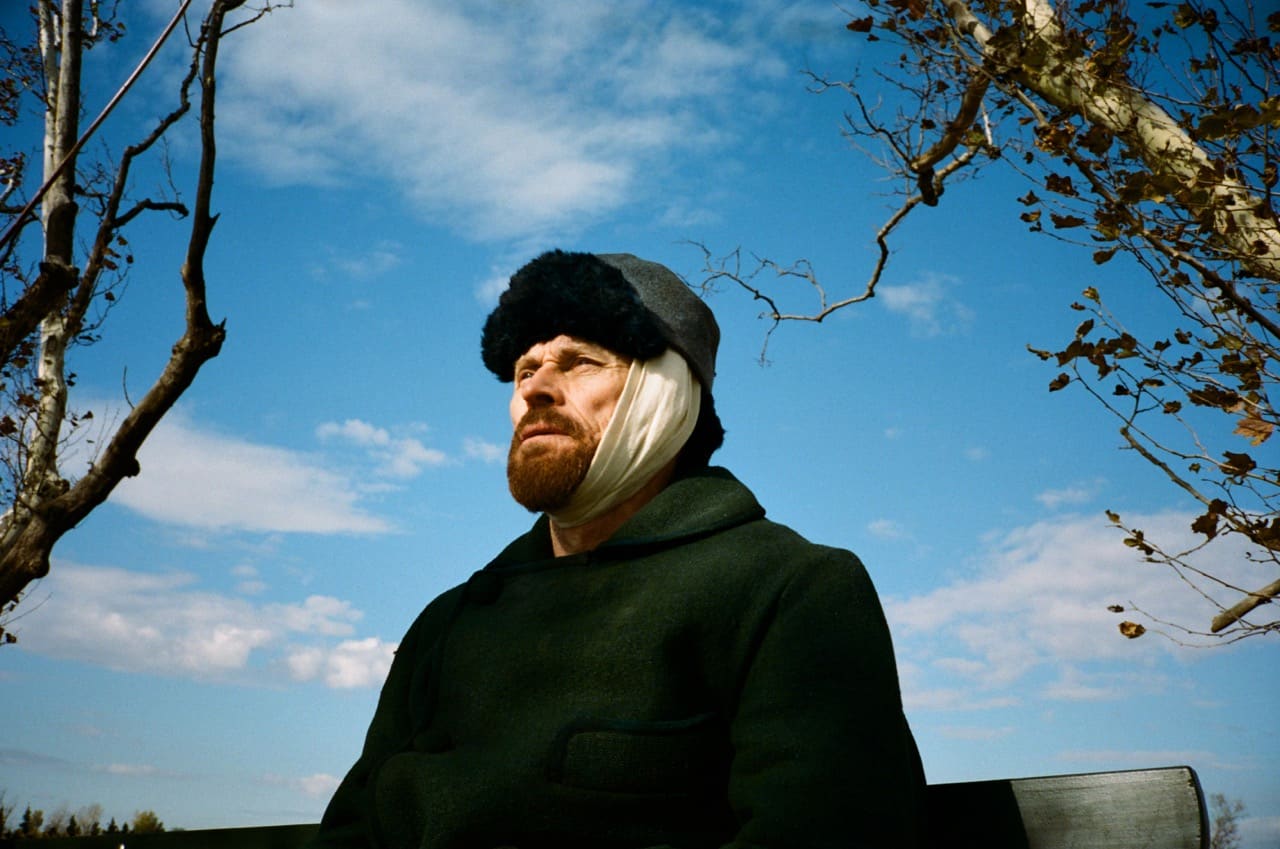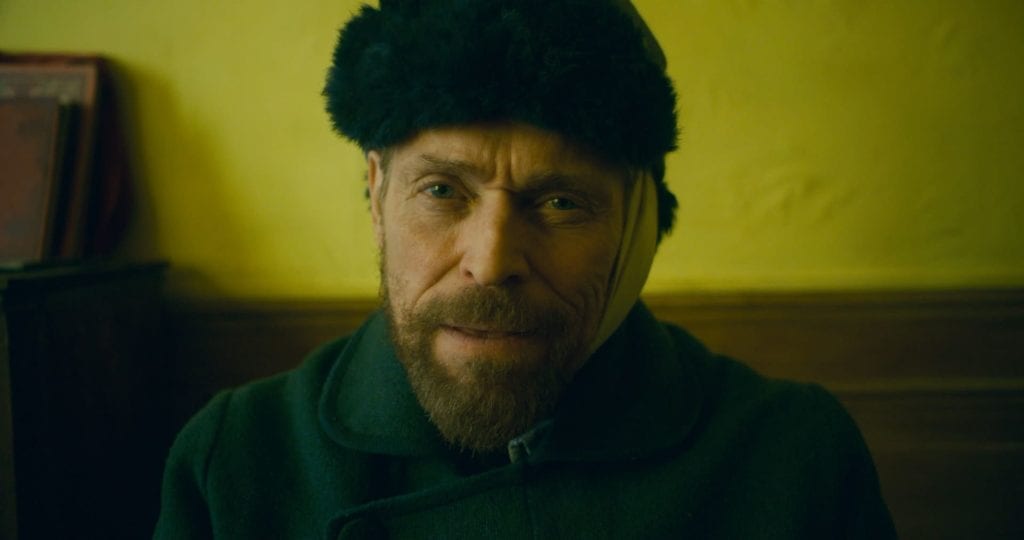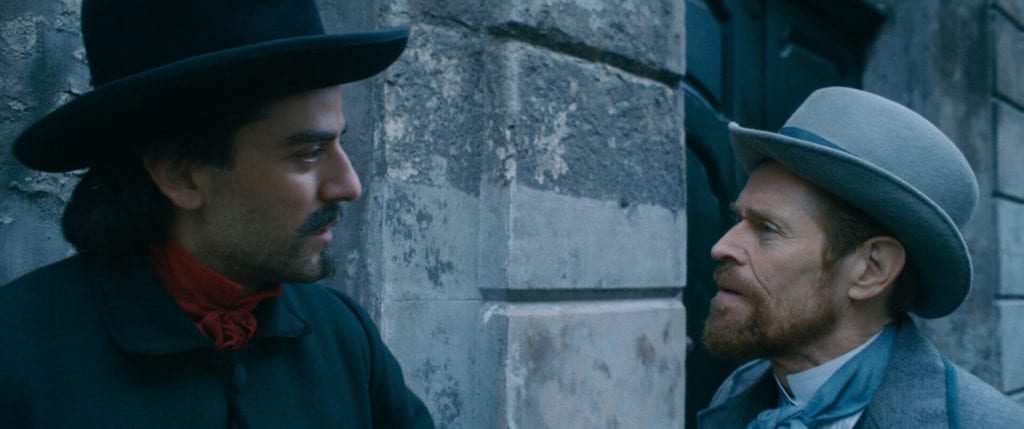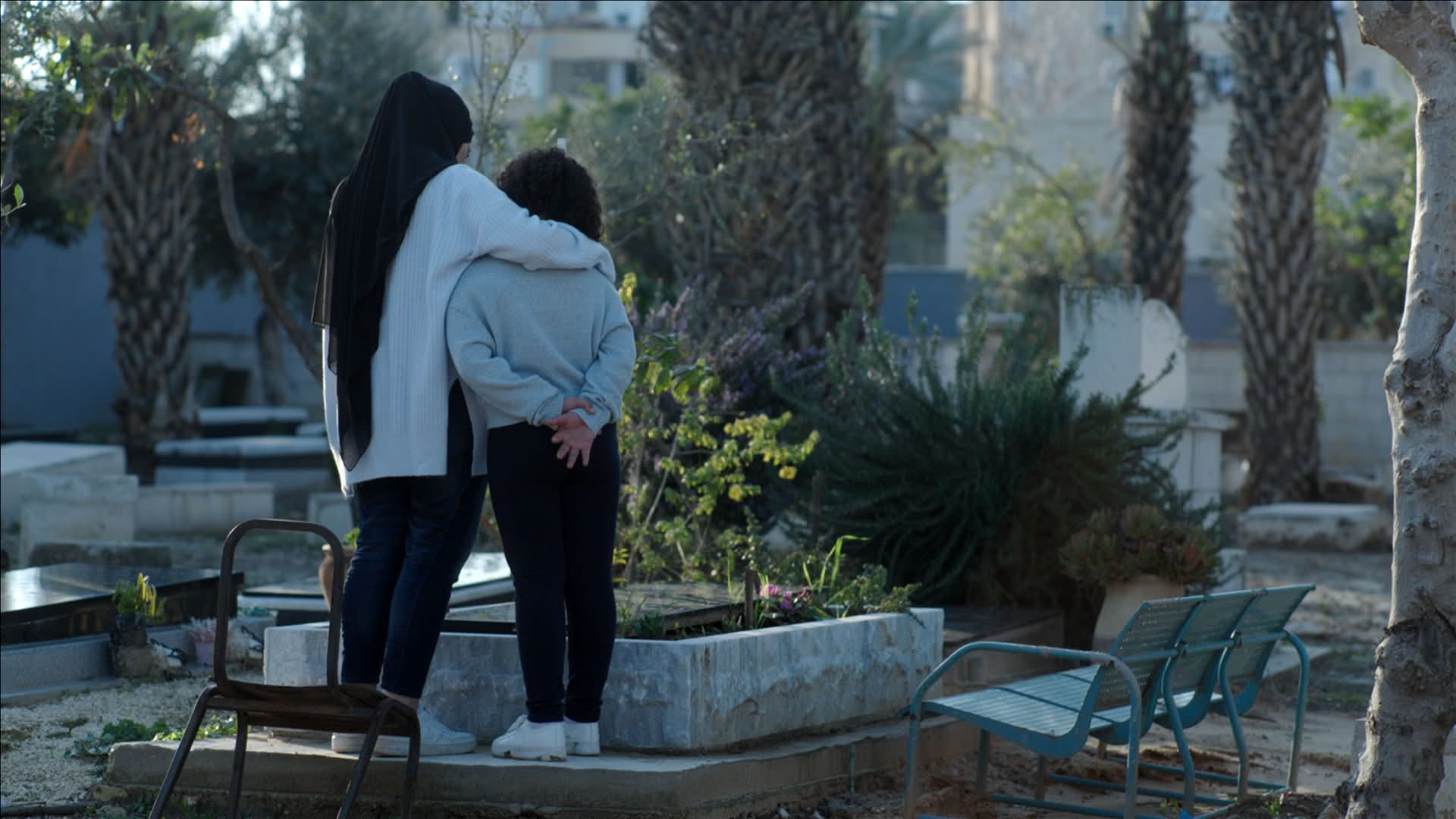?God is nature, and nature is beauty.?
The life of Vincent Van Gogh with all its spiritual and psychological challenges is well known. In At Heaven?s Gate, from artist and filmmaker Julian Schnabel, we see scenes from his life?some based on his letters, some from legends, some (as Schnabel notes) ?just plain invented?. It is not meant to be viewed as a straight biography. Rather it is an examination of what it means to be driven to produce art?especially art that is as personal and out of the ordinary as was Van Gogh?s.
The film covers many years of Van Gogh?s (Willem Dafoe) life, from his days in Paris, to Arles, and Saint-R?my where he was hospitalized, and Auvers, where he died. Along the way we meet others in his circle: his brother Theo (Rupert Friend), Paul Gauguin (Oscar Issac), and some of the people immortalized in his paintings such as Joseph Roulin (Laurent Bateau) and Dr. Gachet (Mathieu Almaric). ?But it is Van Gogh?s art and his making of the art that is more important than plot per se.
It is of import that Schnabel is himself a painter. His approach to the Van Gogh story includes a great deal of subjectivity. He tells the story as it has affected him. The scenes are often based in his reactions to Van Gogh?s works. And his concern for the need to make art is very evident in the way this story is told. Van Gogh often speaks in the film of how much he needs to paint. In one important scene while he is hospitalized, Van Gogh talks with a priest (Mads Mikkelsen) about his art and how he sees the world he paints. The priest thinks his work is ugly and offensive. But Van Gogh sees his vision and his talent as a gift from God. And asks the priest why God would give him a gift to show the ugliness of the world.
There is throughout the film a sense that for Van Gogh painting was in many ways a spiritual exercise. He has a deep connection to nature, immersing himself in the very soil of a field before starting to paint it. And in that connection to nature he feels a connection to God. He expands on this as he talks to the priest and brings in theological insight and scripture to expand on his ideas. (Van Gogh was the son of a pastor and at one time began to study for the ministry.) For Van Gogh in this film, painting is a calling to share his vision of God?s creation. For him that vision is about the beauty that God shares with us.
That conversation with the priest give me pause because there are times in the film that I react to Schnabel?s directing in much the same way the priest reacts to Van Gogh?s art. Some of the camera work and editing at times seem to work against watching the film. A case in point is the use of a lens for some shots that seems to be looking through bifocal glasses. It may be that he is trying to visualize the sense of madness going on in Van Gogh, but it was so off-putting for me that it made the film hard to watch and appreciate fully.
Photos courtesy of CBS Films








Wish to see this.